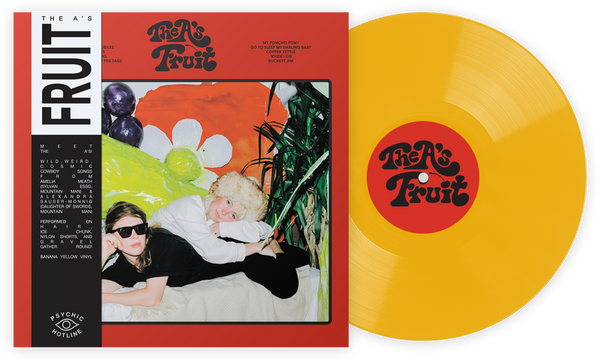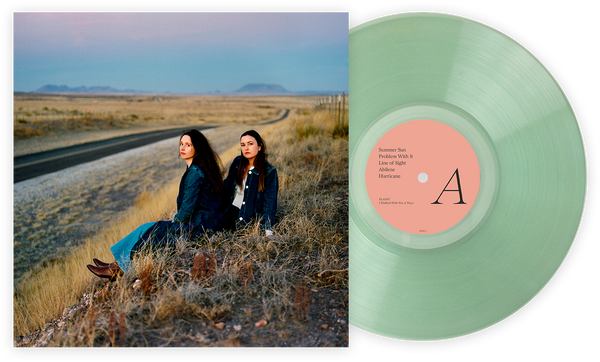Every week, we tell you about an album you need to spend time with. This week, Amileah Sutliff confronts her past as a Little Monster, and tries to extend the right of personal growth to Lady Gaga's Joanne.
Before we get started, and before I open myself to the rejoinders of Lady Gaga’s Little Monsters, A disclaimer: I was once a Lady Gaga super fan. I was one of you. My middle school twitter handle was “@littlemonsterleah.” My best friend and I begged my mom to drive us to the mall so we could blow our entire allowance on clearing out Hot Topic’s Lady Gaga T-shirt stock. In the 8th grade, we sold most of our belongings to buy three tickets (one for each of us, one for our chaperone) to The Monster Ball. The leader of my reluctantly-attended church youth group proclaimed that Lady Gaga was sinful, and I proclaimed that there is no god. I have yet to return to organized religion of any kind, in fear of lighting on fire instantly.
Nothing induces a jaw-breaking cringe like looking back on music you listened to in those brutal, formative preteen years. It’s because we weren’t always the same person we are now, and revisiting who you once were, especially in a format as memory-uncovering as music, is confusing and painful. As much as The Fame still bangs nostalgically, turning it on and looking back at my young, awkward self-googling “what is a disco stick?” and inviting my friends over to learn the dance from “Telephone” makes me highly uncomfortable.
But sometimes retrospective shame is a relief; it’s a sign that, as messy as change can be, you aren’t stagnant. You’ve grown. It seems strange that we don’t always give artists this level of reinventive freedom. New directions, especially from high-profile mainstream artists, are often met with the initial upset of not getting what we expected. I tried to keep this in mind when absorbing Joanne. After ARTPOP tanked in a lot of ways, Gaga made the choice start from scratch. But as a listener, it took a lot of unhinging from my 7th grade dance pop expectations to peel open Joanne.
Lady Gaga’s first solo album in three years--and featuring writing credits from a who's who in indie rock and rock-- combines obvious country and ’70s glam and piano rock-tinged reinvention with shreds of her old self, but it doesn’t come without the scattered confusion that is often the shrapnel of transformation. She shed the theatrical, shell-like skin of ARTPOP, and instead of returning to the exuberant dance antics that first made her famous, she embraced the constructed sincerity of Americana. The catch is that she didn’t draw back on her performative or theatrical nature in the least. The result is a strange highly performative candor that weakly spoofs Americana at its worst, and powerfully recontextualizes it at its best.
With roots in performance art and theater, and a near-10-year music career built on flamboyantly jarring the mainstream, her new path may come as a surprise. I don’t think many were expecting this “stripped-down” version of Gaga. But have no fear, stripped-down does not mean subtle. Gaga does not do subtle. Watch any performance of Gaga railing out on a piano and belting beyond belief; in theory, she has the raw talent to pull off “stripped-down.” But stripping something down in as grand of a way as Gaga does on Joanne often walks the line of corny caricature. At a certain point, rawness turns to a gimmick—the opposite of what it was intended to do in the first place. Between Florence Welch and Gaga on “Hey Girl,” the sheer amount of pure vocal talent on the track had the ability to be astounding, but flat attempts at inspirational lyrics like, “we can make it easy if we lift each other” paired with overdone “Benny and the Jets”-esque instrumentals feel ingenuine and empty at times.
The album is most flawed in its lack of cohesion. In the process of reinvention, Gaga’s influence is more of an ambiguous range or idea than a pointed decision, often relying on the safety that loose variety provides rather than leaning into the risk of commitment. On one hand “John Wayne” and “Angel Down” sound like they belong to different albums. But on the other hand, reinvention isn’t expected to be clean, and Joanne’s experimentation with influence is proof of that. For a pop star in 2016 to both coyly embody and subvert and countless massive american pop and rock influences of the past 30+ years (namely Springsteen, Billy Joel, Elton John) is impressive, at the least.
Despite the hiccups of turning a new artistic leaf, Joanne does have its moments. At its best, it harbors the care-free style of both 1997 Shania Twain and an imaginary 2016 lavish Coyote Ugly remake, but with more class and self-awareness. Performative authenticity is a tricky oxymoron, but when Gaga makes it work, it works. “Dancin’ In Circles” somehow manages to make lonely masterbation seem glamourous (“I lay around, touch myself to pass the time...In the fire I call your name out/Up full night tryin' to rub the pain out”). The post-key-change screams of “Perfect Illusion” are worthy of a heartfelt 2 a.m. dive bar top dance. “Diamond Heart” makes me want to buy a car and drive it too fast and scream the chorus while I pray for a head rush. From start to finish, this album is a breathtaking display of Gaga’s unique, obvious vocal skill. Her capacity to infuse intention and emotion in the timbre of every note she sings has always been her strong point, but it’s particularly evident on Joanne.
Whether Gaga’s post-album progression will be as fruitful as puberty was to an awkward Lady Gaga-obsessed middle schooler remains to be seen, but Joanne harbors ample promise that she’s blossoming in new directions. Joanne just further proves her ability and willingness to tackle, blend and reinterpret a vast number of influences and genres in both genuine and performative lenses. But selfishly, I can still hear my inner 7th grader screaming for a few more dance pop bangers.
Amileah Sutliff is a New York-based writer, editor and creative producer and an editor of the book The Best Record Stores in the United States.
Join the Club!
Join Now, Starting at $44Exclusive 15% Off for Teachers, Students, Military members, Healthcare professionals & First Responders - Get Verified!












